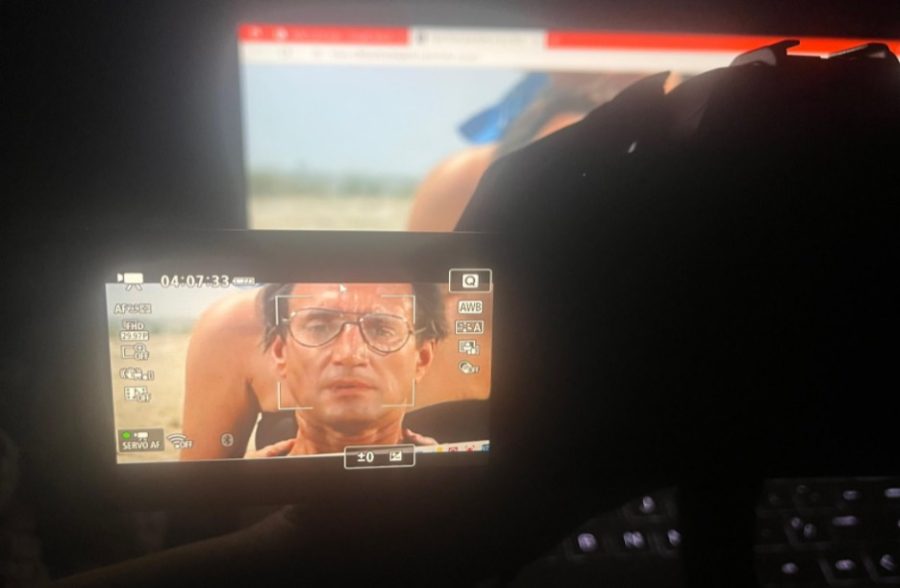How “Jaws” teaches media production students to make good film
March 24, 2023
Films create many emotions and reactions with the help and intentions of its techniques.
I knew that any film I watched prior to learning about the techniques used had been made in a specific way. A Buffalo State University media production course teaches students about ways that films grab the attention of viewers throughout its entirety. A film that uses effects in enticing ways would be 1975’s “Jaws”. Professor and filmmaker Dorothea Braemer teaches students film techniques such as the dolly zoom, creative camera angles, and effective sound effects.
If you are a die-hard “Jaws” fan, then you will be able to recall the scene where Brody is on the beach patrolling and spots the great white shark where the kids were playing. In that moment you see Brody’s face straight on closing in on the camera as the background grows appears to move farther and farther away. According to Braemer of Buffalo, a dolly zoom, originally used by Alfred Hitchcock, is also known as a Hitchcock shot, Vertigo shot, Zolly shot, or Jaws effect. It is an in-camera effect that appears to undermine normal visual perception to create a vivid sense of unease and intensity.
Other related techniques include the thrilling theme song used throughout the film. If you have seen the movie, you know that not every time you hear that music it is something to worry about. It is used to create suspense and anticipation, making you think that the shark is ready to make an unexpected attack.
Of course, lighting and color grading are also factors when creating a film. It all comes down to the colors used in scenes to really catch a pleasing sense to the audience’s eyes. Director Steven Spielberg uses the color yellow throughout the film to signify danger. The subconscious in your mind recognizes seeing yellow in the scenes where the great white shark appears.
Spielberg and cinematographer Bill Butler worked together to creatively come up with the most viewer friendly camera uses. Almost every shot of the Panaflex camera that was a handheld shot without a tripod to stabilize the camera. Using a tripod is one important part of filming in Professor Braemer’s media production course, however there are times when not using a tripod works in favor of the film. For “Jaws”, the reason being a perfect opportunity to create a realistic rocking motion to emulate being on the boat in the water, searching for the shark.
Future filmmakers who are current students can refer to the “Jaws” film to study the techniques that made it an infamous, award-winning classic. Media production majors or film fanatics of any skill can learn more about “Jaws” and any other favorite films through the various television and film courses taught at Buffalo State.





